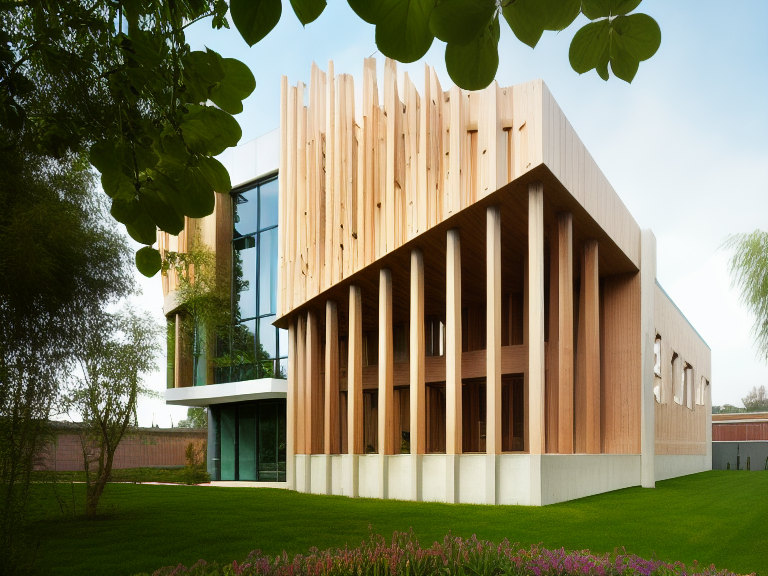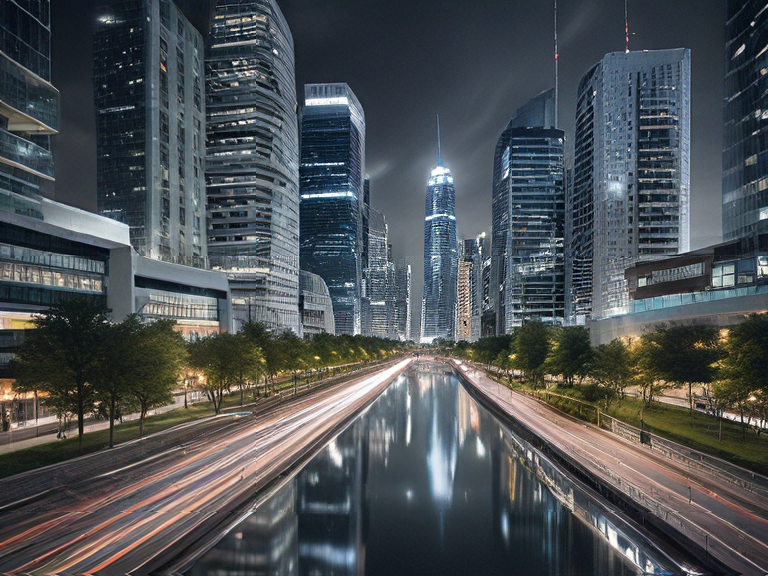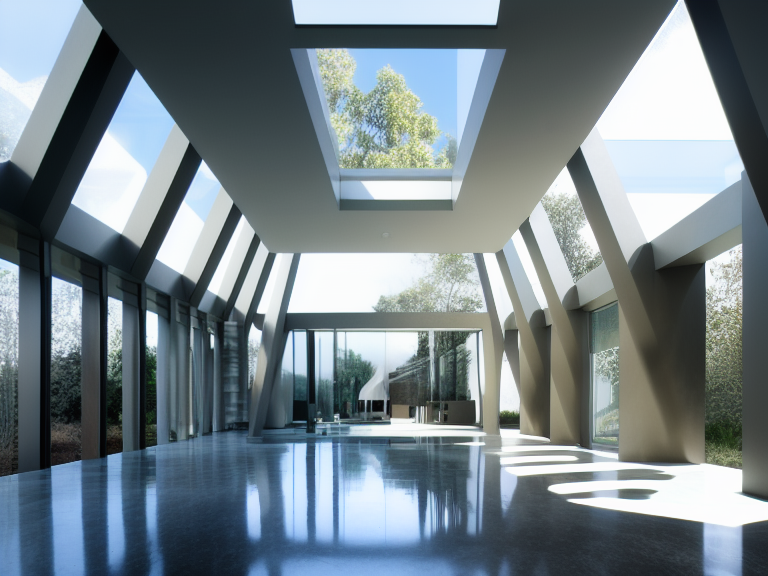Architects are redefining building design principles to prioritize sustainability and energy efficiency. By incorporating green technologies, renewable energy sources, and eco-friendly materials, they're creating high-performance buildings that minimize environmental impact. Biophilic design principles enhance occupant wellbeing and productivity, while sustainable urban planning strategies promote compact, walkable neighborhoods and green infrastructure. From iconic case studies to emerging trends, the pursuit of sustainable architecture is driving innovation and transforming the built environment. As the industry continues to evolve, the possibilities for a more sustainable future are being rewritten, and it's only the beginning.
Redefining Building Design Principles
As the built environment continues to evolve in response to environmental concerns, architects are endeavoring traditional building design principles to prioritize sustainability and energy efficiency. This shift in focus has led to a redefinition of what constitutes good design, with aesthetic considerations taking a backseat to functional ones. Gone are the days of grand, ornate buildings that guzzle energy and resources; instead, architects are choosing for sleek, modern designs that marry form and function.
Space optimization is a key consideration in this new paradigm, as architects aim to create buildings that are not only visually appealing but also highly efficient. This means maximizing natural light and ventilation, while minimizing the need for artificial lighting and heating and cooling systems. The result is a built environment that is not only more sustainable but also more livable, with occupants enjoying healthier, more productive environments.
In this new era of sustainable design, architects are exploring the boundaries of what is possible, experimenting with innovative materials and technologies to create buildings that are truly net-positive. It’s a bold new world, and one that holds much promise for a more sustainable future. As the built environment continues to evolve, one thing is clear: the future of architecture is bright, and it’s green. These advancements not only reduce environmental impact but also enhance efficiency and resilience in urban spaces. Through the architectural wonders creation, designers are integrating nature-inspired solutions, such as green roofs and energy-generating facades, to redefine modern structures. This synergy between innovation and sustainability is shaping a built environment that benefits both people and the planet.
The Role of Green Technologies
Green technologies are revolutionizing the built environment, enabling architects to design buildings that not only minimize environmental impact but also produce their own energy. These innovative solutions are vital in the fight against climate change, as they reduce carbon emissions and promote sustainable development. One of the most promising areas of green technology is carbon sequestration, which involves capturing and utilizing carbon dioxide emissions. This technology has the potential to greatly reduce the carbon footprint of buildings, making them more environmentally friendly.
Climate resilience is another critical aspect of green technologies, as it enables buildings to withstand the impacts of climate change, such as extreme weather events and rising temperatures. By incorporating climate-resilient design principles, architects can create buildings that are better equipped to adapt to changing environmental conditions. This not only reduces the risk of damage and disruption but also helps to guarantee the long-term sustainability of the built environment.
The integration of green technologies into building design is no longer a luxury, but a necessity. As the world grapples with the challenges of climate change, architects must prioritize sustainability and environmental stewardship in their designs. By embracing green technologies, architects can create buildings that are not only environmentally sustainable but also socially responsible and economically viable.
Harnessing Renewable Energy Sources
As architects prioritize sustainable design, they're turning to renewable energy sources to power buildings. Two key strategies are emerging: integrating solar power into building facades and rooftops, and harnessing wind energy with strategically placed turbines. By incorporating these eco-friendly solutions, architects can notably reduce a building's carbon footprint.
Solar Power Integration
By incorporating solar panels into building design, architects can significantly reduce a structure's reliance on non-renewable energy sources. This integration is an essential step towards achieving energy efficiency and minimizing a building's carbon footprint. Solar panels can be seamlessly integrated into a building's facade or rooftop, generating clean energy and reducing the need for fossil fuels. In addition, building-integrated photovoltaics (BIPV) can be used to replace traditional building materials, such as roof tiles or windows, with energy-generating components. This not only reduces energy consumption but also enhances the building's aesthetic appeal. Architects can optimize solar panel placement and angle to maximize energy output, ensuring that the building generates a significant portion of its own power. By harnessing the power of solar energy, architects can create sustainable, high-performance buildings that reduce our reliance on non-renewable energy sources and promote a healthier environment.
Wind Energy Harvesting
Wind turbines, strategically placed on rooftops or integrated into building design, can convert wind energy into electricity, providing a supplementary power source for buildings and further reducing reliance on fossil fuels. This innovative approach to wind energy harvesting not only promotes sustainability but also increases energy independence.
To maximize wind energy harvesting, architects and engineers focus on:
- Turbine Efficiency: Optimizing turbine design to capture more wind energy and convert it into electricity.
- Aerodynamic Optimization: Shaping buildings and turbines to reduce wind resistance and increase energy output.
- Building-Integrated Turbines: Designing turbines that seamlessly integrate into building design, minimizing visual impact while maximizing energy generation.
Sourcing Eco-Friendly Building Materials
Builders and architects are increasingly turning to eco-friendly building materials that not only reduce the environmental footprint of a structure but also provide a healthier indoor environment for occupants. This shift towards sustainable building practices is driven by the growing awareness of the impact of traditional building materials on the environment and human health.
When it comes to sourcing eco-friendly building materials, material transparency is essential. This involves knowing the origin, composition, and life cycle of a material, enabling architects to make informed decisions about the environmental and health implications of their choices. Material transparency also allows for the identification of potential risks and hazards associated with certain materials, ensuring a safer and healthier indoor environment.
Supply chain ethics also play a vital role in sourcing eco-friendly building materials. Architects and builders must consider the social and environmental impact of the supply chain, from extraction and processing to transportation and disposal. By prioritizing supply chain ethics, the industry can reduce its carbon footprint, promote fair labor practices, and support environmentally responsible sourcing. By adopting these sustainable practices, architects and builders can create structures that not only minimize environmental harm but also promote the well-being of occupants.
Biophilic Design for Wellbeing
As architects and builders endeavor to create healthier indoor environments, they're incorporating biophilic design principles that reconnect occupants with nature, fostering a sense of wellbeing and boosting productivity. This approach goes beyond mere aesthetics, as it's rooted in scientific research highlighting the benefits of nature therapy. By incorporating natural elements, such as living walls, green roofs, and ample natural light, buildings can positively impact occupants' mental and physical health.
Here are three ways biophilic design can enhance wellbeing:
- Natural Light Exposure: Incorporating large windows, skylights, and clerestory windows helps regulate occupants' circadian rhythms, leading to improved mood, energy levels, and sleep quality.
- Vegetation Integration: Incorporating plants and green walls can reduce stress levels, improve air quality, and even alleviate symptoms of anxiety and depression.
- Organic Forms and Patterns: Using natural shapes, textures, and patterns in building design can create a sense of calm and relaxation, reducing feelings of anxiety and disorientation.
Urban Planning for Sustainability
As urban planners work towards creating sustainable cities, they're turning to innovative design strategies that prioritize the environment. Green infrastructure design, for instance, integrates natural systems into urban landscapes, mitigating the urban heat island effect and managing stormwater runoff. By adopting compact urban forms, cities can reduce their ecological footprint, promoting walkability, cycling, and a more efficient use of resources.
Green Infrastructure Design
Green infrastructure design integrates natural and semi-natural systems into urban planning, mitigating the environmental impacts of urbanization while enhancing biodiversity and ecosystem services. This approach recognizes the importance of ecological corridors, which connect fragmented habitats, allowing species to migrate and adapt to changing conditions. By incorporating green infrastructure into urban planning, cities can reduce the urban heat island effect, manage stormwater runoff, and improve air quality.
Some key benefits of green infrastructure design include:
- Enhanced Urban Hydrology: Green infrastructure helps to manage stormwater runoff, reducing the burden on municipal drainage systems and mitigating the risk of flooding.
- Improved Air Quality: Vegetation and green spaces absorb pollutants, improving air quality and creating a healthier environment for urban residents.
- Increased Biodiversity: Ecological corridors and green infrastructure provide habitat for a diverse range of species, enhancing urban biodiversity and ecosystem services.
Compact Urban Form
Compact urban form, characterized by dense, walkable neighborhoods and mixed land use, reduces the need for personal vehicles, thereby decreasing air pollution and greenhouse gas emissions. This approach to urban planning prioritizes people over cars, promoting a healthier and more sustainable environment. By increasing urban density, cities can reduce the sprawl that often leads to lengthy commutes and isolation. Mixed land use, where residential, commercial, and recreational spaces coexist, further minimizes the need for transportation, fostering a more connected and vibrant community. This compact urban form also encourages a more efficient use of resources, such as energy, water, and waste management. As a result, cities can reduce their ecological footprint and provide a higher quality of life for their citizens. By adopting compact urban form principles, cities can become more resilient, sustainable, and equitable, ultimately enhancing the well-being of their inhabitants.
Case Studies in Sustainable Success
Through innovative design and cutting-edge technology, several buildings around the world have successfully incorporated sustainable architecture, serving as exemplary models for environmentally conscious construction. These case studies demonstrate that sustainable architecture is not only eco-friendly but also economically viable and socially responsible.
Here are three notable examples:
- The Edge, Amsterdam: This office building boasts an impressive 98% reduction in energy consumption, thanks to its advanced climate control system and energy-harvesting facade.
- One Central Park, Sydney: This residential tower features a lush green facade, providing natural insulation and reducing the need for air conditioning. It also incorporates a community engagement program, promoting sustainable living among residents.
- The VanDusen Botanical Garden Visitor Centre, Vancouver: This LEED Platinum-certified building features a living roof, geothermal heating, and rainwater harvesting. Its sustainable design has reduced energy consumption by 70%.
These case studies highlight the importance of stakeholder collaboration, policy development, and economic incentives in driving sustainable architecture. By promoting public awareness and community engagement, we can create a regulatory framework that supports eco-friendly construction. As market trends shift towards sustainability, funding opportunities for green buildings will continue to grow, making sustainable architecture a viable option for developers and policymakers alike.
The Future of Eco-Architecture
As sustainable architecture continues to gain momentum, architects and policymakers are now exploring new frontiers in eco-architecture, from integrating artificial intelligence to optimizing building performance. The future of eco-architecture is poised to revolutionize the way we design and interact with buildings, making them not only environmentally friendly but also resilient and adaptable to the challenges of climate change.
| Eco-Architecture Trends | Description | Benefits |
|---|---|---|
| Artificial Intelligence | Integrating AI to optimize building performance and energy efficiency | Improved energy savings and reduced carbon footprint |
| Virtual Cities | Creating virtual models of cities to simulate and predict urban planning scenarios | Enhanced climate resilience and urban planning decision-making |
| Climate Resilience | Designing buildings and cities to withstand extreme weather events and climate change | Reduced risk of damage and displacement, improved public health and safety |
| Biophilic Design | Incorporating natural elements and materials to promote occupant well-being and productivity | Improved occupant health, increased productivity, and reduced stress |
As the built environment continues to evolve, architects and policymakers must prioritize climate resilience, incorporating cutting-edge technologies and innovative design strategies to create sustainable, adaptive, and resilient cities. By embracing the future of eco-architecture, we can create a better tomorrow for generations to come.
Frequently Asked Questions
How Do Sustainable Buildings Impact Local Ecosystems and Biodiversity?
She explores how sustainable buildings affect local ecosystems and biodiversity. By reducing habitat fragmentation, these structures can preserve ecological resilience, allowing species to thrive. Sustainable buildings integrate with their surroundings, minimizing disruptions to natural habitats. This harmonious coexistence fosters biodiversity, ensuring ecosystems remain resilient in the face of environmental challenges. By prioritizing ecological balance, sustainable buildings become a cornerstone of thriving ecosystems.
Can Sustainable Architecture Coexist With Historic Preservation Efforts?
"As the old meets the new, the question arises: can sustainable architecture harmonize with historic preservation efforts? The answer lies in cultural revival, where ancient structures are reborn through adaptive reuse. By marrying modern eco-friendly design with preserved historical essence, architects can create a symphony of past and present. This harmonious blend not only protects cultural heritage but also paves the way for a sustainable future, where the old and new coexist in perfect harmony."
What Is the Average ROI on Sustainable Building Investments?
She analyzes the average ROI on sustainable building investments, finding that energy savings and financial incentives greatly enhance returns. Government grants and strategic investment strategies further amplify gains. On average, sustainable building investments yield a 15-20% ROI, outperforming traditional investments. By leveraging these benefits, investors can maximize their returns while supporting eco-friendly initiatives.
How Do Local Building Codes Impact Sustainable Architecture Innovation?
Ironically, local building codes, designed to safeguard public safety, often stifle sustainable architecture innovation. Code compliance and zoning regulations can be so restrictive that they hinder the adoption of cutting-edge green technologies. Architects must navigate a complex web of rules, sacrificing innovation for compliance. It's a game of 'code-keeping,' where the focus shifts from sustainability to mere compliance, stifling the very progress these codes were meant to foster.
Are Sustainable Architecture Certifications Worth the Additional Cost?
She weighs the benefits of sustainable architecture certifications against their additional cost. While certifications like LEED or WELL can increase a project's credibility and marketability, they also add significant expenses. A thorough cost analysis is essential to determine if the certification benefits outweigh the extra expenditure. By crunching the numbers, architects can make an informed decision about whether the certification is worth the investment.



